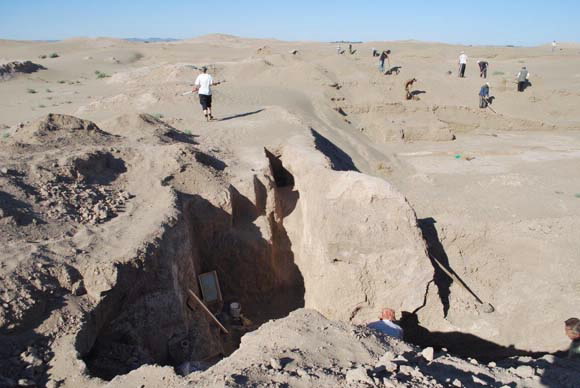The Khorezm culture of Central Asia is characterised by monuments and citadels that are testament to its fascinating history. The succession of dynasties ran from the 2nd Century BC until the 4th Century AD.
 |
| Fig. 1 shows excavations in progress at the study site. |
Initial investigations have been carried out by Soviet and Russian scientists since the 1950s. Currently, Uzbek scientists are studying the area.
Professor Alison Betts of the University of Sydney has been investigating a site near Biruni south east of the Aral Sea. It’s an impressive site which occupies more than 42 hectares with outlying agricultural areas. It was abandoned about 100 AD and a new citadel was established about 30km to the north.
Professor John Dodson, Head of the Institute for Environmental Research at ANSTO, was invited to investigate the area for underlying environmental causes that led its inhabitants to abandon the site. The Russian and Uzbek view is that they left as a result of a flood, but another theory for the move is that there was political change.
 |
| Fig. 2 shows modern dune fields at the site. |
Study of a number of soil and dune profiles however, reveal that any flooding greatly precedes the time of the Khorezm citadels, and that their establishment coincides with the migration of the Amu Darya river, away from the area and the formation of dune fields. In exciting news, dating of these changes will be conducted at ANSTO.


